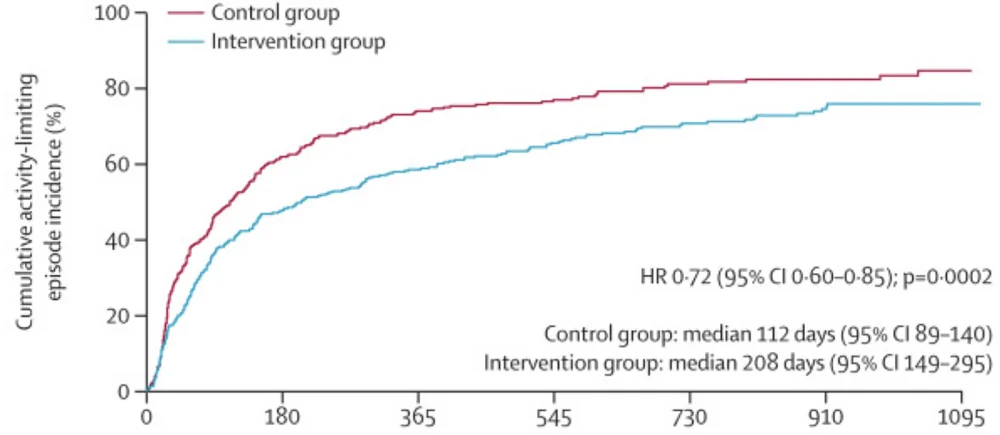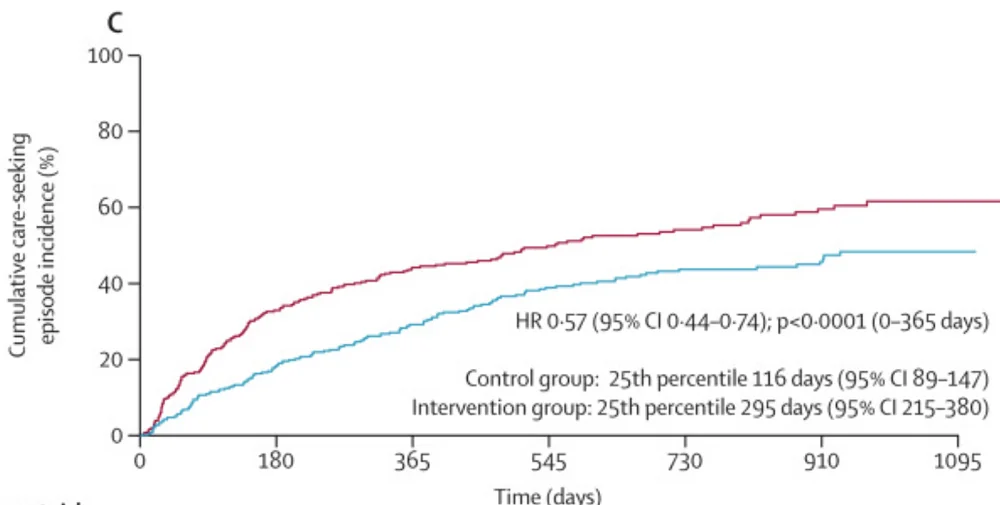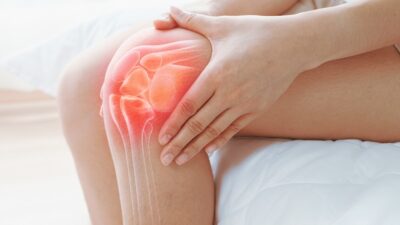Walking Reduces Risk of Low Back Pain Recurrence
- Participants in the control group realized what they were missing.

Publishing in The Lancet, scientists have shown that simple walking can have significant effects on the recurrence of back pain and disability metrics.
Age-related and more than just annoying
While not as lethal as heart attacks and cancer, low back pain is also an age-related disease. According to WHO, “in 2020, low back pain affected 619 million people globally and it is estimated that the number of cases will increase to 843 million cases by 2050, driven largely by population expansion and ageing”.
Low back pain limits mobility, decreases quality of life, and thus contributes to further age-related deterioration [1]. Once a person first experiences low back pain, the risk of recurrence is very high [2]. Treatment includes invasive procedures such as surgery and rehabilitation via physical activity. Some types of exercise have shown good results in clinical trials, but many of them require specialized equipment and close supervision [3].
Walking away from pain
What about something as simple as walking? Here, opinions among scientists and the general public differ. In this paper, scientists have reported on the first randomized controlled trial to investigate the efficacy of walking in preventing the recurrence of low back pain.
The scientists recruited 701 patients who had recovered from an episode of non-specific low back pain within the previous six months. The intervention itself was delivered by private physiotherapy clinics across Australia. The guideline was to walk five times per week for at least half an hour a day, but the physiotherapists were authorized to individualize the program to increase adherence.
The consulting physiotherapists also educated their patients from the treatment group on basic strategies on how to mitigate the risk of recurrence and how to deal with mild recurrence episodes. There were other limitations to the study as well: for instance, participants in the control group were not barred from seeking other care for their condition, and the prevalence of women was high (81%). All of this might have affected the results.
The participants’ median age was 54. Most of them already had several recurring episodes of low back pain (median 33 episodes) and had reported a high perceived risk of recurrence. The chosen primary outcome was the number of days between randomization and the first recurrence of activity-limiting low back pain.
Significant risk reduction
In the study, walking reduced the risk of an activity-limiting recurrence by 28%. The median number of days between recurrences was almost twice as high in the intervention group as in the control group (208 days and 112 days respectively). These differences were highly statistically significant.

For the incidence of episodes that caused participants to seek care, the difference was even bigger, with a 43% risk reduction.

Interestingly, over the course of the study, members of the control group also significantly increased their walking activity, although not as rapidly as the study group. At baseline, the reported number of minutes of walking per week was 70 for the study group and 67 for the control group. At the three-month mark, it was 165 and 114 minutes, respectively, and a year after the beginning of the study, 160 and 159. This is a well-known effect in which the control group, conscious of not receiving the intervention, begins mimicking it voluntarily. The control group was also much more likely to seek additional care, such as massage and physiotherapy.
Despite the control group eventually catching up with the study group in walking, significant differences in disability score remained until the end of the study and even increased. While patients in the study group reported a marked decline in disability score, it was much more attenuated in the control group. Statistically significant differences in perceived quality of life, favoring the control group, were detected at most timepoints.
An individualized, progressive walking and education intervention substantially reduced low back pain recurrence compared with a no treatment control group in adults who were not previously engaging in regular physical activity. This finding was consistent across the primary and two secondary recurrence outcomes. There were also reductions in back pain-related disability in the intervention group for up to 12 months, and the intervention had a high probability of being cost-effective from the societal perspective compared with a no treatment control.
Literature
[1] Gore, M., Sadosky, A., Stacey, B. R., Tai, K. S., & Leslie, D. (2012). The burden of chronic low back pain: clinical comorbidities, treatment patterns, and health care costs in usual care settings. Spine, 37(11), E668-E677.
[2] da Silva, T., Mills, K., Brown, B. T., Pocovi, N., de Campos, T., Maher, C., & Hancock, M. J. (2019). Recurrence of low back pain is common: a prospective inception cohort study. Journal of physiotherapy, 65(3), 159-165.
[3] Steffens, D., Maher, C. G., Pereira, L. S., Stevens, M. L., Oliveira, V. C., Chapple, M., … & Hancock, M. J. (2016). Prevention of low back pain: a systematic review and meta-analysis. JAMA internal medicine, 176(2), 199-208.








